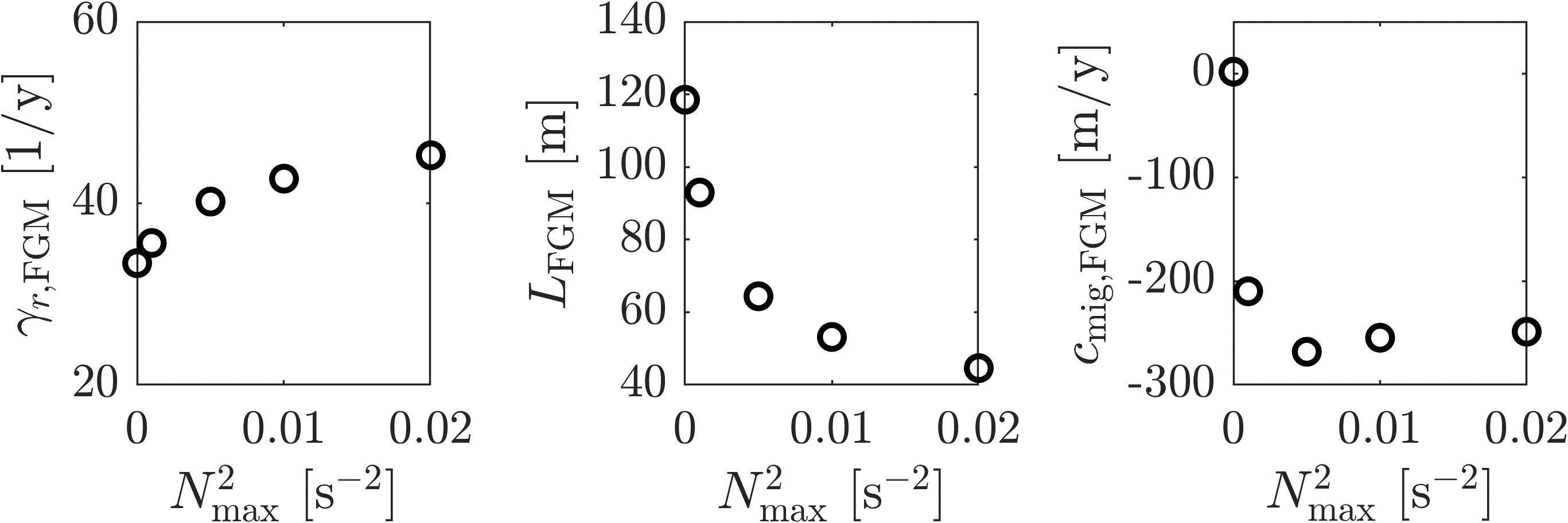W.M. van der Sande1*, P.C. Roos1, T. Gerkema2, S.J.M.H. Hulscher1
1 University of Twente
2 NIOZ
*corresponding author:
Introduction
Estuarine sand dunes are large-scale bedforms situated in hydrodynamically complex environments with tidal flow and river discharge as main drivers. Furthermore, the density difference between fresh and salt water gives rise to various types of tide-averaged circulations which are aggregated in the term estuarine circulation. These circulations are characterized by landward flow near the bed and seaward flow near the surface. One of these circulations is the gravitational circulation, which is induced by a baroclinic pressure gradient resulting from a longitudinal salinity (density) gradient – its effect on sand dunes has been the subject of past research (Van der Sande et al., 2021). Here, we investigate the influence of another type of circulation on estuarine sand dunes: tidal straining circulation. This circulation is induced by varying stratification between ebb and flood tide due to a mechanism referred to as Strain-Induced Periodic Stratification (SIPS). Stratification reduces the vertical mixing of momentum and as such affects the flow, resulting in a circulation pattern similar to gravitational circulation.
Methods
We present an idealized process-based morphodynamic model which is extended to account for variations in vertical mixing through the eddy viscosity, which is parameterized as a function of the gradient Richardson number (and thus as a function of the local vertical density gradient). The vertical density gradient is expressed in terms of the squared Brunt-Väisälä buoyancy frequency, which is imposed on our local model domain as a periodic function of time only. This is incorporated in a 2DV shallow water model and combined with a bed-load sediment transport formulation and a bed evolution equation. A stability analysis of the flat bed then reveals the emergence of sand dunes.
Results
We impose the squared Brunt-Väisälä buoyancy frequency as a periodic function with maximum value N2max and frequency equal to the M2 tide. In Figure 1, we vary N2max (i.e. the buoyancy frequency at maximum stratification) to show its influence on the properties of the Fastest Growing Mode (FGM). Migration rate (right panel) drops when introducing the SIPS mechanism and then tends to a constant for all tested nonzero values. Most strikingly, the wavelength of the FGM drops when introducing stratified conditions. This suggests that bedforms in partially-mixed estuaries have shorter wavelengths.

Figure 1: sensitivity of the properties of the Fastest Growing Mode to the maximum squared buoyancy frequency. Left panel: growth rate, middle panel wavelength and right panel migration rate.
References
Van der Sande, W.M., Roos, P.C., Gerkema, T., & Hulscher, S.J.M.H. (2021). Gravitational circulation as driver of upstream migration of estuarine sand dunes. Geophysical Research Letters, 48, https://doi.org/10.1029/2021GL093337
I. Surname1*, F.N. Another-Surname2 , Y. Next-Surname2
1 University Name, Country; 2 Organization Name, Country
* Corresponding author: mail.name@organization.org


